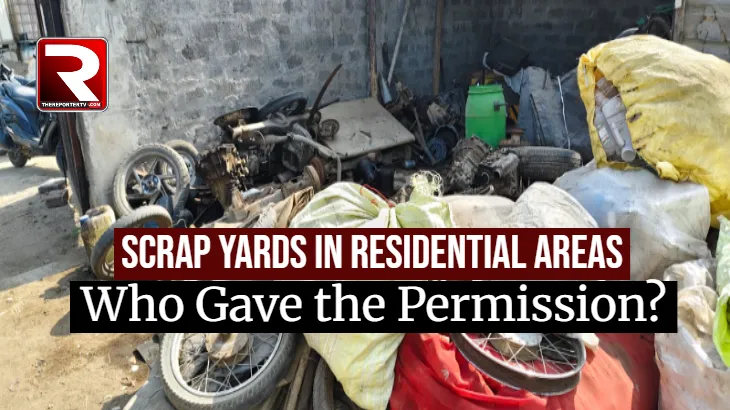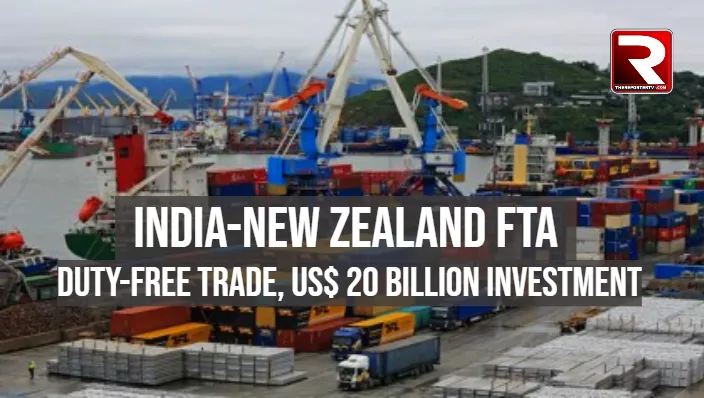New Delhi, Aug 26 – Indian exporters are bracing for a major economic jolt as the United States imposes steep tariffs of up to 50% on approximately $60.2 billion worth of goods from India, starting August 27. The move affects nearly two-thirds of India’s $86.5 billion annual exports to the US, threatening millions of jobs across sectors like textiles, seafood, gems, and auto components.
According to a report released by the Global Trade Research Initiative (GTRI), the tariffs are expected to shrink India’s exports to the US by 43%, bringing them down to $49.6 billion in FY2026. Labour-intensive sectors may face up to a 70% decline in shipments, with serious implications for regions like Tiruppur, Surat, Bhadohi, and Visakhapatnam.
While some sectors will remain shielded—including pharmaceuticals, electronics, and refined fuels, totaling $27.6 billion—competitors such as Vietnam, China, Mexico, and Bangladesh are already positioning to seize India’s lost market share.
Sector-Wise Breakdown of the Tariff Shock
Auto Components: Out of $6.6 billion in exports, $3.4 billion will face 25% duties, with the rest slapped with full 50% tariffs.
Seafood (Shrimp): $2.4 billion in exports will be hit with 60% total tariffs, threatening aquaculture hubs in Andhra Pradesh.
Diamonds & Jewellery: $10 billion industry faces 52.1% tariffs, endangering jobs in Surat and Mumbai.
Textiles & Apparel: Exports worth $10.8 billion will suffer 63.9% tariffs; major impact expected in Tiruppur, NCR, and Bengaluru.
Carpets & Handicrafts: $2.8 billion sector, highly US-dependent, faces collapse amid rising competition from Turkey and Vietnam.
Agri-Food Products: $6 billion in exports—especially basmati rice, tea, and spices—to face 50% duties.
Metals & Chemicals: Steel, aluminium, copper ($4.7 billion), and organic chemicals ($2.7 billion) face tariffs exceeding 50%.
Machinery & Vehicles: $9.3 billion in exports risk losing ground to suppliers from Mexico, EU, and other Asian economies.
GTRI’s Recommendations to Mitigate the Crisis
The GTRI has outlined a comprehensive action plan, urging the government to adopt a multi-pronged strategy to protect the economy and jobs:
Launch a ₹15,000 crore interest equalisation scheme for MSME exporters.
Reform tax structures and streamline business regulations to reduce transaction costs.
Provide wage support and targeted credit lines to vulnerable clusters like shrimp farms, apparel hubs, and jewellery artisans.
Strengthen RoDTEP and RoSCTL schemes to maintain liquidity.
Push for market diversification through trade missions to EU, Gulf, and East Asia.
Establish “India+1” export hubs in UAE, Mexico, and Africa to bypass US tariff exposure.
Support technology upgrades, raw material duty cuts, and value-added production in key sectors.
Encourage formation of export consortia and joint ventures in Free Trade Agreement (FTA) markets.
FIEO Raises Alarm, Calls for Immediate Relief
The Federation of Indian Export Organisations (FIEO) has expressed deep concern over the impact of the US tariffs. FIEO President S C Ralhan, in an interview with ETV Bharat, warned that 55% of India’s US-bound shipments—worth nearly $48 billion—are now at a pricing disadvantage of 30–35%, making them uncompetitive.
Ralhan urged for:
A one-year moratorium on loan repayments.
Collateral-free credit under expanded ECLGS-like schemes.
30% automatic enhancement in working capital credit limits.
Immediate intervention by the Reserve Bank of India (RBI) to support MSME liquidity.
“The situation demands swift and coordinated action between the government, banks, and exporters. Without strong policy responses, India’s export map could shift dramatically, with long-term consequences for livelihoods and economic resilience,” Ralhan said.
What Remains Untouched
Despite the sweeping tariffs, around 30% of India’s exports to the US—worth $27.6 billion—will remain duty-free. Key exempted sectors include:
Pharmaceuticals (medicines and APIs): Over $14 billion.
Electronics: Around $8.2 billion.
Refined Fuels: Approximately $3.3 billion.
Smaller categories like books, plastics, computing gear, ferroalloys, and even niche exports such as coral and cuttlebone.
Outlook and Broader Impact
While India’s exports to the US are under pressure, the overall export outlook remains somewhat positive. India’s total exports of goods and services are projected to grow to $839.9 billion in FY2026, thanks largely to a 10% increase in services exports, expected to touch $421.9 billion.
However, GDP growth may slow from 6.5% to 5.6%, and MSME clusters—which are the backbone of India’s export economy—could face severe stress.
Conclusion
As the global trade environment shifts, India faces a critical juncture. The US tariff blow is significant, but not insurmountable. With coordinated policy interventions, diversification, and industry adaptation, India can navigate this disruption and reassert its place in the global export landscape. The actions taken now will determine not only the country’s resilience but also its long-term competitiveness on the world stage.












